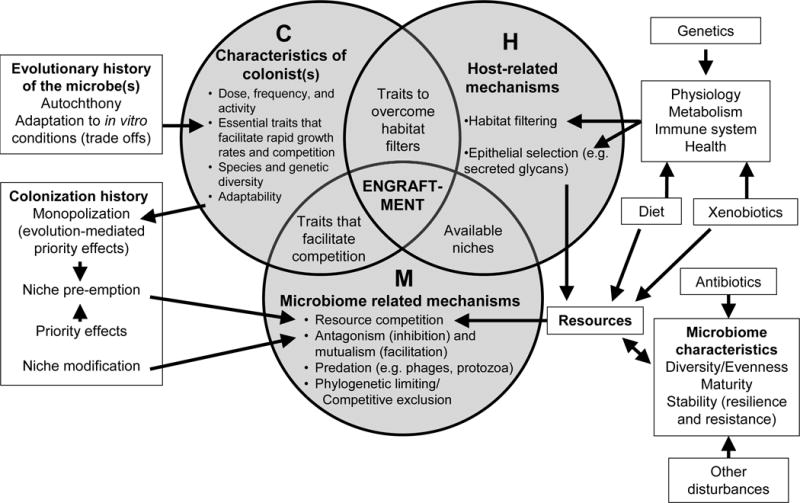Figure 2.

Ecological framework describing the characteristics, mechanisms and principles that influence colonization success of microorganisms used in microbiome-modulating strategies. (C) Characteristics of the potential colonists, dose, frequency of entry, activity, as well as the diversity of the propagule population increase the likelihood of colonization success. In addition, traits to overcome habitat filters, engage in symbiotic interactions with the host, and secure resources are essential for engraftment. (H) Host-related mechanisms select for microbes that possess traits to colonize the gut. Habitat filters such as bile acids, defensins, and immune responses select for organisms that possess the necessary adaptation. Host-derived glycans and the provision of adhesion sites can facilitate the establishment of microbes. (M) Microbiome-related mechanisms, mainly related to competition and microbe-microbe interactions define successful engraftment. All three components have to be compliant for engraftment to occur, and components of C, H, and M interact.
